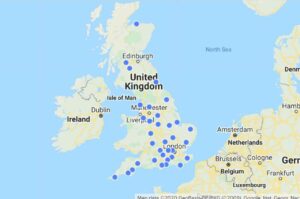Dear FSA members,
The FSA is considering our response to the current Government consultation on proposed new legislation on offensive and dangerous weapons. Below is a framework outlining the FSA board’s thoughts on the act. We are writing to you to get your views on our response to the new legislation. If you wish to have an input into the FSA response can you please read the text below and then comment below by November 30th. Alternatively, you can email your comments to enquiries@forestschoolassociation.org with the subject heading ‘Government consultation on new legislation on offensive and dangerous weapons‘.
Remember: You can also submit your personal response to the public consultation
Thank you,
The FSA Board
……………………………….
Government consultation on new legislation on offensive and dangerous weapons
Dates for submission; Oct 14th – December 9th
Background
There is increasing public concern over rise in violent crime involving knives, corrosive substances and firearms. Regarding Forest School this really only involves knives. Knife crime increased between March 2016 and 2017 from 28,875 – 34,013 – 20%, and possession of knives in public and school grounds without good cause from 11,491 to 14,183 – 23%. Online sales are not adhering to legislation most are not asking for evidence of being over 18 just the ticking of a box but not checked at delivery point. In shops the checking is pretty good.
Previous legislation does not cover education institutions other than schools.
The proposed law additions/changes are in bold and italics…with the proposed FSA response after.
Proposed Changes to legislation
- Creating offences to prevent knives sold online being delivered to a private residential address, and ensuring the age and identity of the purchaser are checked.
It will be for retailers to decide where purchasers can collect the knives bought online and have their age checked. However, there are a number of possible options open to retailers including requiring that customers collect the knives at a store if they have both an online and physical store presence, while online-only retailers could consider making arrangements for the item to be collected at a place where age and identity can be verified in person e.g.entering into a third party agreement with another retailer, collection service or post office etc. where age and identity can be verified in person. The important point is that the purchaser’s age and identity must be checked.
Government is also considering whether the offences should also apply to catalogue/mail order service sales of knives and to delivery services for knives ordered online from abroad.
FSA Response.
This will make it more expensive for providers to purchase knives unless the online community can enter into agreement with retailers. The FSA is not in favour of making online sales am offense, can this not be checked either by the postman/delivery personnel to private addresses asking for over 18 ID, as per alcohol online sales or by the post-office where collection has to be at a post office – if this can be done and signified by online companies then no prob?? What does collection from a third party like the post office mean for transport of the knife to home/workplace from pickup point.
- Making it an offence to possess certain weapons in private.
The 1988 Order now sets out 19 different types of weapons such as push daggers, butterfly knives, and zombie knives, (see appendix 1 for list)
In Scotland, the Criminal Justice Act 1988 (Offensive Weapons) (Scotland) Order 2005 sets out the 17 types of weapons to be covered by this new offence.
Current legislation provides defences for a person charged with possession of an article with a blade or point or an offensive weapon in a public place and on school premises. We will provide defences available similar to other knife legislation, and we are considering providing statutory defences on cultural, artistic and religious grounds.
Currently you have defence if you can prove you have the article;
(a)for use at work;
(b)for religious reasons; or
(c)as part of any national costume.
FSA response
There is no reference to considerations on work grounds does this mean the 1988 act is OK? What does ‘considering’ providing statutory defences on cultural, artistic and religious grounds mean??? The FSA is concerned about this as it does seem to be an invasion of privacy, however if you can prove the possession is for work reasons this should not be seen as something that would cause a practitioner to feel they are breaking the law.
- Introducing an offence of having an article with blade or point or offensive weapon without good reason in education institutions other than schools. (schools already covered in the criminal justice act 1988 where carrying a knife without good reason is an offense).
This means extending the legislation to the premises of sixth form colleges, further education and universities.
FSA response
No problem
- Amending the existing offences of threatening with an article with blade or point or offensive weapon.
offences require proof that the defendant threatened the other person with the weapon “in such a way that there is an immediate risk of serious physical harm to that other person”.
The Government is considering amending the offences as there is currently a requirement in that the prosecution must show that there is an immediate risk that the other person will actually suffer serious physical harm.
We are intending to amend the offences the offence is committed when the victim reasonably fears they would be likely to suffer serious physical harm. This test will be based on how a reasonable person would respond to such a threat, and not whether the victim was objectively at risk of immediate serious physical harm.
FSA response
This could strengthen our case for safe use of knives at FS, however a threat is open to interpretation. For example some one may be holding a knife pointing toward someone a distance away and the person may interpret this as threatening even though the person holding the knife is not doing this in a threatening way. This needs to be reworded to avoid any misuse of this law change.
- Updating the definition of a flick knife.
The current definition of flick knives in the Restriction of Offensive Weapons Act 1959 is outdated and refers to the mechanism that activates the blade being in the handle. We will delete the reference to the switch blade mechanism being in the handle, as manufacturers now place the mechanism in a part of the knife that can be argued is part of the blade. This means the prohibition on the sale, manufacture and importing of flick knives cannot be circumvented through changes in their design
FSA response
No Problem
Appendix 1 List of weapons subject to current legislation;
folding pocketknife if the cutting edge of its blade exceeds 3 inches
Blades 3 inches and over AND
(a) knuckleduster, that is, a band of metal or other hard material worn on one or more fingers, and designed to cause injury, and any weapon incorporating a knuckleduster;
(b)a swordstick, that is, a hollow walking-stick or cane containing a blade which may be used as a sword;
(c)the weapon sometimes known as a “handclaw”, being a band of metal or other hard material from which a number of sharp spikes protrude, and worn around the hand;
(d)the weapon sometimes known as a “belt buckle knife”, being a buckle which incorporates or conceals a knife;
(e)the weapon sometimes known as a “push dagger”, being a knife the handle of which fits within a clenched fist and the blade of which protrudes from between two fingers;
(f)the weapon sometimes known as a “hollow kubotan”, being a cylindrical container containing a number of sharp spikes;
(g)the weapon sometimes known as a “footclaw”, being a bar of metal or other hard material from which a number of sharp spikes protrude, and worn strapped to the foot;
(h)the weapon sometimes known as a “shuriken”, “shaken” or “death star”, being a hard non-flexible plate having three or more sharp radiating points and designed to be thrown;
(i)the weapon sometimes known as a “balisong” or “butterfly knife”, being a blade enclosed by its handle, which is designed to split down the middle, without the operation of a spring or other mechanical means, to reveal the blade;
(j)the weapon sometimes known as a “telescopic truncheon”, being a truncheon which extends automatically by hand pressure applied to a button, spring or other device in or attached to its handle;
(k)the weapon sometimes known as a “blowpipe” or “blow gun”, being a hollow tube out of which hard pellets or darts are shot by the use of breath;
(l)the weapon sometimes known as a “kusari gama”, being a length of rope, cord, wire or chain fastened at one end to a sickle;
(m)the weapon sometimes known as a “kyoketsu shoge”, being a length of rope, cord, wire or chain fastened at one end to a hooked knife;
(n)the weapon sometimes known as a “manrikigusari” or “kusari”, being a length of rope, cord, wire or chain fastened at each end to a hard weight or hand grip;
o) a disguised knife, that is any knife which has a concealed blade or concealed sharp point and is designed to appear to be an everyday object of a kind commonly carried on the person or in a handbag, briefcase, or other hand luggage (such as a comb, brush, writing instrument, cigarette lighter, key, lipstick or telephone).
(p) a stealthknife, that is a knife or spike, which has a blade, or sharp point, made from a material that is not readily detectable by apparatus used for detecting metal and which is not designed for domestic use or for use in the processing, preparation or consumption of food or as a toy;
(q) a straight, side-handled or friction-lock truncheon (sometimes known as a baton);
(r) a sword with a curved blade of 50 centimetres or over in length; and for the purposes of this sub-paragraph, the length of the blade shall be the straight line distance from the top of the handle to the tip of the blade.
(s) the weapon sometimes known as a “zombie knife”, “zombie killer knife” or “zombie slayer knife”, being a blade with
(i) a cutting edge;
(ii) a serrated edge; and
(iii) images or words (whether on the blade or handle) that suggest that it is to beused for the purpose of violence





All sounds good – great that FSA is consulting and responding on behalf of members.
Thank you FSA for highlighting these changes and casting a critical eye over them. I think the response is thorough and fair and I look forward to hearing any further updates. Many thanks!
Looks like a good response to me. Just on thing… could a pointy stick or letter opener be classed as (p)?
Also, does this mean we can’t make blowpipes from bamboo anymore?
This all sounds really sensible to me. Thank you for helping us understand this.
I support the above. As an association we should be publicly supporting the tightening up of legislation, whilst safeguarding the legitimate but well controlled use of knives within a forest school context. Great care does need to be taken with on line knife orders, and I agree proposed changes are likely to affect costs. Could knives be supplied to forest school training centres who have a knowledge and register of association members, and could keep a record of knives supplied and only accept deliveries for registered members? Delivery to a recognised forest school provider might be workable? Perhaps this could include schools so that a knife could be delivered direct to a site and never need to be transported? Could we have a nationally recognised register for forest school leaders which includes a permit for transporting a whittling knife between sites and home – possessing at home for recreational use – practising skills needs to be provided for, and wording needs to be clear. Needs to be a balance and parity as cooking knives potentially as dangerous and can’t have a law to say people with mental health issues can’t use a veggie knife ! Need to ensure amateur whittling enthusiasts etc still able to continue their interest whilst making them aware of potential issues in current climate, and ensuring they care for and secure and transport their knives responsibly. Wouldn’t want to see an OAP potentially arrested for innocently trying to pass on his skills to a grandchild for instance. Important to uphold that right.
This all sounds reasonable.
Can FSA members be informed with updates to let everyone know if the comments will be taken on board and the resulting changes in law when it is finalised?
Thumbs up
Agreed Arainn